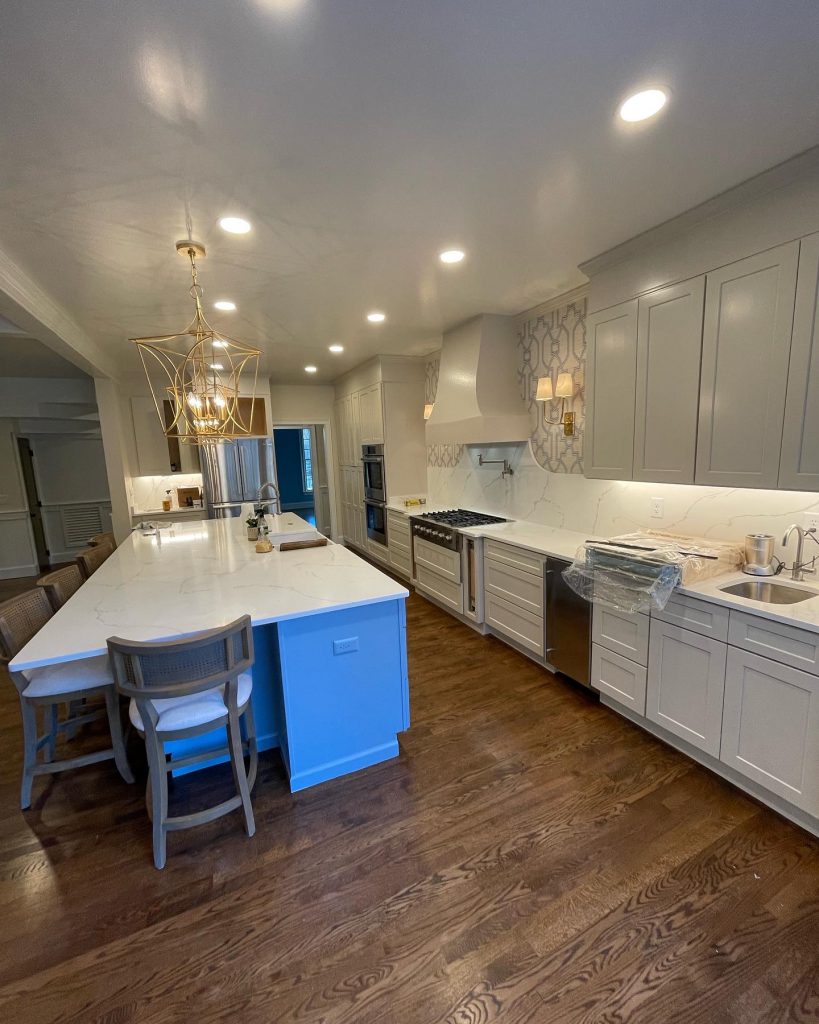When hiring a painter, many homeowners focus solely on price or speed. It’s easy to assume the lowest bid is the best deal. However, the most expensive mistakes happen when subtle warning signs go unnoticed.
Even small painting projects can fail prematurely if foundational steps are skipped. Inadequate surface preparation, cheap or thinned paint, or unprofessional practices can lead to peeling, cracking, uneven coverage, or faded color—sometimes in just a few years.
The three painter red flags every homeowner should watch for when hiring a painter are:
-
Inadequate or skipped surface preparation – the backbone of a durable paint job.
-
Use of cheap, thinned, or inappropriate paint products – compromises finish, durability, and warranties.
-
Unprofessional or unsafe practices – such as overspray, missing contracts, and lack of insurance.
This guide provides actionable advice, service-specific examples, and product recommendations to help homeowners make smart decisions when hiring a painter.
Why Choosing the Wrong Painter Is More Expensive Than You Think
A well-executed painting project can last 7–10 years, while poor workmanship often fails within 1–3 years.

Hidden Costs of a Bad Painter
-
Early repainting: Materials and labor need to be repeated sooner than expected.
-
Surface repair: Cracked drywall, peeling wood, or damaged trim must be fixed before repainting.
-
Property damage: Overspray or spills can harm landscaping, fixtures, or furniture.
Emotional and Time Costs
Repeated interventions create stress, disputes with contractors, and frustration over a home that fails to meet expectations.
Warranty Implications
Many paint manufacturers require proper surface prep and approved products. Using the wrong paint or skipping prep can void coverage, leaving homeowners responsible for unnecessary expenses.
Red Flag #1 – Inadequate or Skipped Surface Prep
Why Prep Work Matters
Surface preparation is critical to the success of any painting project. Paint cannot adhere effectively to dirty, rough, or unprimed surfaces. Standard prep includes:
-
Cleaning surfaces to remove dirt, grease, or mildew.
-
Sanding rough patches for smooth adhesion.
-
Scraping loose or peeling paint.
-
Filling cracks with caulk or sealant.
-
Priming raw or repaired surfaces.
-
Masking adjacent areas to prevent overspray.
Skipping these steps often results in blistering, peeling, cracking, and uneven finish.
How to Spot This Red Flag During Estimates
-
Painter provides vague descriptions of prep work.
-
Statements like “Primer isn’t necessary” or “This paint will cover everything.”
-
Quick job without sanding, scraping, or masking observed on-site.
Product-Specific Guidance
| Product | Recommended Use |
|---|---|
| Primers: Zinsser Cover-Stain, Sherwin-Williams Multi-Purpose Primer | Adhesion, stain blocking, and consistent finish |
| Caulks/Sealants: Sashco Big Stretch, SherMax Elastomeric | Filling cracks and gaps, elastomeric flexibility |
| Sanding Tools: Festool orbital sanders with HEPA vacuum | Smooth, dust-free surfaces |
Proper prep ensures adhesion, durability, and a flawless finish—essential when hiring a painter.
Red Flag #2 – Cheap, Thinned, or Inappropriate Paint
How Paint Quality Impacts Results
Low-quality or thinned paint contains fewer solids, fades quickly, and peels prematurely. Thinning paint beyond manufacturer recommendations reduces coverage and adhesion, leading to shorter-lived finishes.
Premium paints offer:
-
Higher solids content for consistent coverage.
-
Advanced pigments that resist fading.
-
Strong binders for long-term adhesion.
Warning Signs
-
Extremely low bid compared to competitors.
-
Painter insists that one coat is sufficient without inspecting the surface.
-
Avoids naming the paint brand, line, or product type.
Product Comparison Table
| Feature | Premium Paint (Benjamin Moore Aura, Sherwin-Williams Duration) | Cheap/Thinned Paint |
|---|---|---|
| Coverage | 250–400 sq. ft./gal | 150–250 sq. ft./gal |
| Durability | 8–12 years | 2–4 years |
| Fade Resistance | High | Low |
| Scrub Resistance | Excellent | Poor |
Best Practices
-
Verify that your quote specifies paint brand, line, number of coats, and recommended primer.
-
Confirm manufacturer warranties and application standards are followed.
-
Match paint type to surface and environmental conditions (e.g., exterior, high humidity, UV exposure).
Red Flag #3 – Unprofessional or Unsafe Practices

Overspray and Messy Work
Overspray on windows, trim, or landscaping signals lack of control. Common causes:
-
Wrong sprayer tip.
-
Skipping masking or drop cloths.
-
Rushing to finish the job.
Overspray not only damages property but increases cleanup costs and may require dispute resolution.
Missing Documentation and Contracts
A missing or vague contract increases the risk of:
-
Incomplete work.
-
Extra or unexpected charges.
-
Lack of recourse in warranty disputes.
Contracts should detail prep steps, paint brand, number of coats, labor, cleanup, timeline, and warranty.
Insurance and Licensing Gaps
Painters without liability or workers’ comp insurance expose homeowners to potential lawsuits. For example, if an uninsured painter is injured onsite, the homeowner could be responsible for medical costs.
Homeowner Best Practices
-
Request insurance and licensing proof before work begins.
-
Ensure proper masking and drop cloths are used.
-
Review contracts for scope, prep, product, and warranty details.
How Homeowners Can Protect Themselves
Questions to Ask Before Hiring a Painter
-
“What prep steps will you take?”
-
“Which paint line and number of coats do you recommend?”
-
“Do you carry insurance and licenses?”
-
“Can you provide references or photos of past projects?”
Warning Sign Checklist
-
Vague answers regarding prep, paint, or number of coats.
-
Quote significantly below competitors.
-
No written contract or insurance certificate.
-
Evidence of messy or unsafe work practices on site.
People Also Ask
Q: How can I tell if my painter used cheap paint?
Ask for brand, product line, and coverage rate; compare to industry standards.
Q: Is one coat of paint ever enough?
Rarely, except for same-color repaint using high-quality paint and proper prep.
Q: What should a painter’s estimate include?
Prep work, primer, paint brand and line, number of coats, labor, cleanup, and warranty.
Q: Why is overspray a concern?
Indicates poor technique, risks property damage, and signals unprofessional practices.
Q: What happens if paint is thinned too much?
Reduced adhesion, streaks, early peeling, and uneven coverage.
Spot These Red Flags Before It’s Too Late

The wrong painter can cost thousands in repairs, repainting, and stress. Watch for skipped prep, cheap or thinned paint, and unprofessional practices.
When hiring a painter, focus on process, product quality, and professionalism, not just price. Proper execution ensures a durable, aesthetically pleasing painting project that lasts for years.

